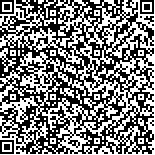| Quote
: |
郭奎奎,邓多喜,张泓,黎帅,林英惠,谭洁.合募配穴针刺对肠易激综合征模型大鼠脊髓背根神经节PAR-2、TRVP1及相关致敏细胞因子表达的影响[J].湖南中医药大学学报英文版,2018,38(1):59-64.[Click to copy
] |
|
| |
|
|
| This paper
:Browser 2305times Download 657times |
| 合募配穴针刺对肠易激综合征模型大鼠脊髓背根神经节PAR-2、TRVP1及相关致敏细胞因子表达的影响 |
| 郭奎奎,邓多喜,张泓,黎帅,林英惠,谭洁 |
| (湖南中医药大学, 湖南 长沙 410208) |
| 摘要: |
| 目的 观察合募配穴针刺对肠易激综合征(IBS)大鼠脊髓背根神经节(DRG)蛋白酶活化受体-2(PAR-2)、P物质(SP)、瞬时受体电位香草酸亚型1(TRPV1)和降钙素相关肽(CGRP)表达的影响,探讨合募配穴针刺对内脏高敏感性的可能作用机制。方法 采用雄性SD大鼠慢性应激结合束缚法制备肠易激综合征模型。随机分为空白组、模型组、合募针刺组和药物组。造模成功后,合募针刺组对大肠下合穴上巨虚和募穴天枢穴进行电针干预;药物组给予匹维溴胺灌胃。采用腹部回撤反射(AWR)对大鼠进行内脏敏感性评估并观察大鼠体质量变化情况,用免疫组织化学方法检验脊髓L5-S1段PAR-2、TRVP1、SP和CGRP的表达。结果 AWR评分中,治疗前合募针刺组和模型组与空白组比较差异明显(P<0.01),治疗后合募针刺组与模型组比较有显著性差异(P<0.01),针刺治疗IBS内脏高敏感性有效;治疗后模型组大鼠与空白组比较,脊髓背根神经节中PAR-2、SP、TRVP1和CGRP的IOD值显著升高(P<0.01);合募针刺组和药物组与模型组比较,脊髓背根神经节中PAR-2、SP、TRVP1和CGRP的IOD值明显降低(P<0.01)。结论 合募配穴针刺干预机制可能是通过PAR-2、TRVP1降低SP和CGRP在DRG神经元中的表达来降低IBS大鼠的内脏高敏感性。 |
| 关键词: 肠易激综合征 合募配穴针刺 蛋白酶活化受体-2 P物质 瞬时受体电位香草酸亚型1 降钙素相关肽 |
| DOI:10.3969/j.issn.1674-070X.2017.01.016 |
| Received:August 23, 2017 |
| 基金项目:湖南省中医药科研计划重点资助项目(201525);湖南省教育厅科学研究项目优秀青年项目(16B197)。 |
|
| Effects of He-Mu Adjunct Acupuncture Points on the Expression of PAR-2, TRVP1 and Related Sensitized Cytokines in Dorsal Root Ganglia of IBS Model Rats |
| GUO KuiKui,DENG Duoxi,ZHANG Hong,LI Shuai,LIN Yinghui,TAN Jie |
| (Hunan University of Chinese Medicine, Changsha, Hunan 410208, China) |
| Abstract: |
| Objective To observe the effect of He-Mu adjunct acupuncture points on the protease-activated receptor-2(PAR-2),transient receptor potential vanilloid 1(TRPV1) and calcitonin gene related to peptide (CGRP) of dorsal root ganglion (DRG) of the rat spinal cord in rats with irritable bowel syndrome (IBS),and to explore the possible mechanism of raised acupuncture on visceral hypersensitivity.Methods The male SD IBS model rats were built by using the chronic stress binding method.The model rats were randomly divided into blank group,model group,He-Mu acupuncture group and drug group.After successfully building the model,the He-Mu acupuncture group was acupunctured at Xiahe point and Tianshu point of the colon.The drug group was gavaged with pinaverium bromide.The visceral sensitivity of the rats was evaluated by abdominal back reflex.The expression of PAR-2,TRVP1,SP and CGRP in dorsal root ganglion of spinal cord was detected by immunohistochemistry.Results Before treatment,there were significant differences in the AWR scores between the acupuncture group and the model group,compared with the blank group (P<0.01);after treatment,there was significant difference in the AWR scores between the acupuncture group and the model group (P<0.01).Acupuncture in treatment of visceral hypersensitivity of IBS is effective.Compared with the blank group,PAR-2,SP,TRVP1 and CGRP increased significantly in the model group (P<0.01).PAR-2,SP,TRVP1 and CGRP significantly decreased in acupuncture group and drug group,compared with model group (P<0.01).Conclusion He-Mu adjunct acupuncture points can reduce the expression of SP and CGRP in the DRG through PAR-2 and TRVP1,to reduce the visceral hypersensitivity of IBS rats. |
| Key words: irritable bowel syndrome He-Mu adjunct acupuncture points protease-activated receptor-2 substance p transient receptor potential vanilloid 1 calcitonin gene related to peptide |
|

二维码(扫一下试试看!) |
|
|
|
|


